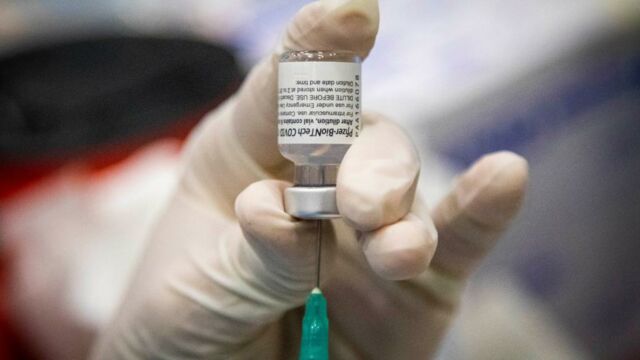Study shows two in five high-risk people have ‘low or undetectable’ COVID antibodies after two jabs

A new study has shown that 40% of people with impaired immune systems have ‘low or undetectable’ COVID antibodies even after two jabs.
While most of us have been subjected to lockdowns and varying levels of COVID measures, many immunocompromised and immunosuppressed people spent the majority of the last year shielding to protect themselves from the threat of coronavirus.
Discover our latest podcast
Those most clinically at-risk were first in line for the coronavirus vaccines. But, while the efficacy of these jabs was well researched in healthy individuals, studies are still ongoing as to how COVID vaccines affect those with impaired immune systems.
More under this adMore under this adTo address this knowledge gap, researchers from the Universities of Glasgow, Birmingham, Oxford, Liverpool, Imperial College London and Leeds Teaching Hospitals NHS Trust launched the OCTAVE study, one of the world’s largest trials researching the effects of COVID vaccines on immunocompromised people.
Low COVID antibodies found in 40% of the study’s immunocompromised participants
So far, researchers have compared the vaccine responses of 600 immunocompromised people with 231 healthy patients after receiving either the Pfizer or AstraZeneca jabs.
More under this adMore under this adEarly results showed that 60% of patients with a weakened immune system had an antibody response that matched those of healthy adults. However, 40% of participants showed ‘low or undetectable’ coronavirus antibodies. A further 11% of the group failed to generate any antibodies up to four weeks after their second vaccine, with almost all of these people having a condition known as vasculitis.
Antibodies aren’t the only protection given by the vaccine
While the antibody response among the study’s high-risk participants left more to be desired, it doesn’t mean that coronavirus vaccines are ineffective for this group.
More under this adMore under this adCOVID vaccines provide more than just virus antibodies; they also boost T-cell response. T-cells are specific white blood cells that focus on targeting specific foreign threats. The study showed that T-cell response in almost all groups, including those with no antibody response, was on par with healthy adults, indicating some form of protection against the virus.
OCTAVE’s co-investigator, Professor Carl Goodyear, said: ‘When we look at the T cell responses across all the cohort, they look identical to the healthy controls, so there was a robust T cell response being generated.’
More under this adMore under this adThe vaccine is actually immunologically active in all patients, they can mount an immunological response. It's the type of response to the quality of the response we're really trying to understand here.
More research needs to be done
Although the study’s results showed fewer to no antibodies in a large number of at-risk people, what that says about the effectiveness of COVID vaccines for this group is yet to be determined.
More under this adMore under this adProfessor Iain McInnes, lead of the OCTAVE trial, explained:
While 40% of these clinically at-risk patent groups were found to have a low or undetectable immune response after a double dose of the vaccine, we are encouraged that this figure isn’t higher. However, it is possible even partial protection may be clinically beneficial, and this is something we will closely monitor.
Professor McInnes went on: ‘There are also imminent plans in place to investigate the effects of administrating an alternate vaccine dose to the group with an undetectable or low vaccine immune response; and we hope these findings will support the role out of an immunological screening programme for vulnerable patients to identify those who will benefit from a subsequent vaccine boost. We would continue to encourage all people and especially those patients within these clinically at-risk groups to make sure they receive their vaccine doses if they haven’t done so already.’
More under this ad